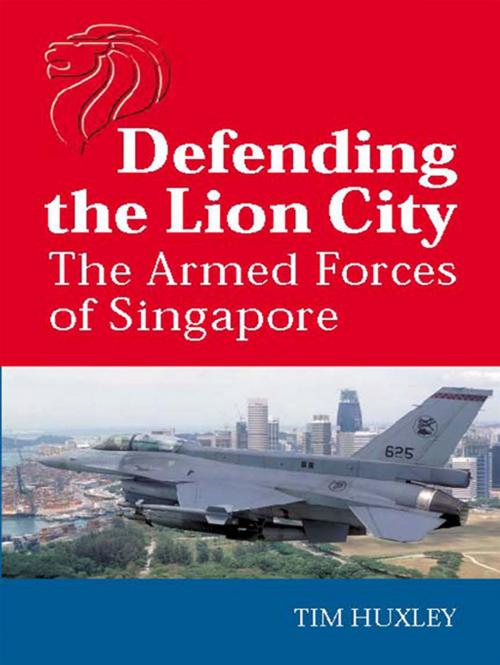| Author: | Tim Huxley | ISBN: | 9781741150094 |
| Publisher: | Allen & Unwin | Publication: | December 1, 2000 |
| Imprint: | Allen & Unwin | Language: | English |
| Author: | Tim Huxley |
| ISBN: | 9781741150094 |
| Publisher: | Allen & Unwin |
| Publication: | December 1, 2000 |
| Imprint: | Allen & Unwin |
| Language: | English |
Singapore is located in the heart of the Muslim Malay world, yet 78 per cent of its population is ethnically Chinese. The prosperous city-state relies on outside sources for virtually all its water and food; it has no access to the high seas, on which it depends for 85 per cent of its trade, except through its neighbours' waters. Physically linked to Malaysia by a causeway and a bridge, only twenty kilometres of sea separate Singapore from the nearest Indonesian territory.
Surrounded by larger and more populous nations, Singapore has been acutely aware of its vulnerability since separating from the Malaysian federation in 1965. Singapore's government has met its defence needs with characteristic determination, building powerful, well-equipped and highly-trained armed forces based on a relatively small professional core and much larger numbers of conscript and reservist citizen soldiers.
Defending the Lion City, the first-ever major study of the Singapore Armed Forces (SAF), provides a comprehensive and up-to-date assessment of Singapore's impressive military capability and the strategic outlook and policies which have shaped it. The book analyses the roles, structure, training and logistic arrangements of each branch of the SAF - army, air force and navy - as well as recent moves to enhance combined arms and joint service capabilities. It investigates Singapore's growing military cooperation with other armed forces in the region - and further afield - and assesses the SAF's personnel policies, the role of SAF officers in politics and civilian administration, and Singapore's burgeoning defence-industrial capability. In light of the crucial role the SAF plays in maintaining the security of Singapore, Defending the Lion City also asks the question: what are the areas of potential vulnerability in Singapore's defence posture?
Singapore is located in the heart of the Muslim Malay world, yet 78 per cent of its population is ethnically Chinese. The prosperous city-state relies on outside sources for virtually all its water and food; it has no access to the high seas, on which it depends for 85 per cent of its trade, except through its neighbours' waters. Physically linked to Malaysia by a causeway and a bridge, only twenty kilometres of sea separate Singapore from the nearest Indonesian territory.
Surrounded by larger and more populous nations, Singapore has been acutely aware of its vulnerability since separating from the Malaysian federation in 1965. Singapore's government has met its defence needs with characteristic determination, building powerful, well-equipped and highly-trained armed forces based on a relatively small professional core and much larger numbers of conscript and reservist citizen soldiers.
Defending the Lion City, the first-ever major study of the Singapore Armed Forces (SAF), provides a comprehensive and up-to-date assessment of Singapore's impressive military capability and the strategic outlook and policies which have shaped it. The book analyses the roles, structure, training and logistic arrangements of each branch of the SAF - army, air force and navy - as well as recent moves to enhance combined arms and joint service capabilities. It investigates Singapore's growing military cooperation with other armed forces in the region - and further afield - and assesses the SAF's personnel policies, the role of SAF officers in politics and civilian administration, and Singapore's burgeoning defence-industrial capability. In light of the crucial role the SAF plays in maintaining the security of Singapore, Defending the Lion City also asks the question: what are the areas of potential vulnerability in Singapore's defence posture?















